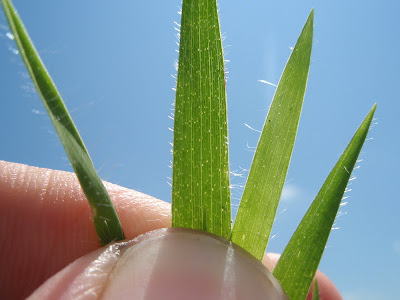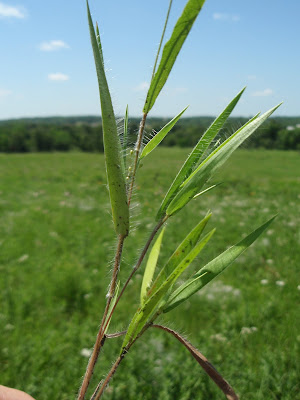The Dichanthelium Series: Dichanthelium praecocius

There, beneath the big grasses of the prairie, nestled next to triple-canoed violet fruits, aborted Scleria achenes and the tumbled tops of Agrostis hyemalis is a grass that no one sees. It is small. It is hairy and dirty.

The stems emerge tangential, node, soon bend geniculate but not quite erect. Hairs are ubiquitous but sparse enough to collect dirt; char in good years.

Vernal panicles elongate and expand moments before the axillary inflorescences; a novel trait for the genus. Lodicules pump like steam engines as the flags of gynoecium and androecium unfurl to disperse and collect anemochorous wares. Spikelets fall short of D. villosissiumum and rarely exceed 1.9mm length.
Its ligule further distinguishes it from D. villosissimum and D. acuminatum into which it has been lumped as of late. The ligule is much too long for this (exceeding 1.0mm) and has a unique shape in that the central hairs are shorter than the marginal ligule hairs.





Boy, to someone who doesn't know plants like me, it sure looks like P. sphaerocarpon...Very nice post! Isn't this just the best time of year?
ReplyDeleteThat is one dirty, hairy grass. Nice photos.
ReplyDeleteThe first few weeks of summer do offer some fine botanizing. That being said, I really miss playing Carex perigynia.
ReplyDeleteI tried to keep this post brief so I can follow it up with species of similar gross morphology.